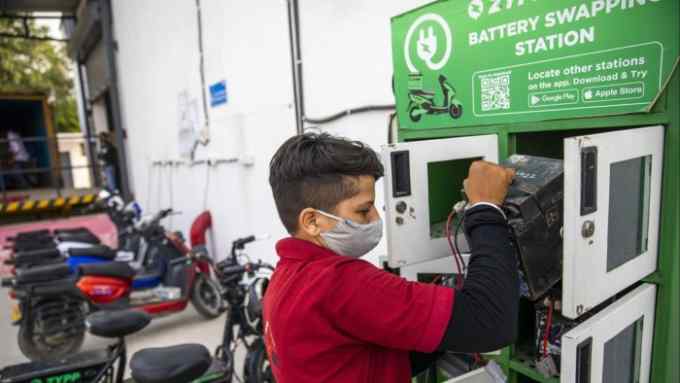Australia’s Commonwealth Bank tie-in gives More Telecom a boost

Roula Khalaf, Editor of the FT, selects her favourite stories in this weekly newsletter.
French telecoms company Orange shocked the market in 2016 when it bought a majority stake in a bank, to muscle in on Europe’s financial sector. The reverse scenario occurred five years later in Australia, when the country’s largest bank took a slice from another citrus-branded telecoms player, Tangerine, and its sister company More Telecom.
Orange Bank did not produce the desired results in Europe — Orange completed an exit from financial services this year, having racked up a reported €1bn of losses. But the more modest move into Australian telecoms by CBA, the bank, has proved more fruitful, and driven growth at the small communications player that it backed.
CBA, also known as Commonwealth Bank of Australia or CommBank, bought its 25 per cent stake in emerging telecoms company Tangerine and More Telecom in 2021, as part of a push to go “beyond banking”. Telecoms was one element of the strategy; the bank also took stakes in energy company Amber, retail business Little Birdie, and Swedish buy now, pay later provider Klarna.
The CBA backing has helped More Telecom, in particular, to “shoot out the lights” in terms of growth, says Andrew Branson, the company’s chief executive. It is ranked 259 in the latest annual FT ranking of 500 high-growth Asia-Pacific companies, with a compound annual growth rate of 46.8 per cent from 2019 to 2022. “For a maturing company to hit these growth rates is harder than in the early days,” Branson notes.
More Telecom and Tangerine were founded in 2013 after brothers Andrew and Richard Branson sold a previous telecoms business, just as the country’s National Broadband Network (NBN) — the government-owned network that is used by all the country’s telecoms service providers — was launched.

While another Richard Branson is also synonymous with challenger brands, notably in telecoms via Virgin Mobile, there is no connection with the bearded billionaire. The Branson brothers, from Somerset in south-west England, moved to Australia after identifying a niche in the telecoms market.
The two businesses have grown rapidly, and Tangerine is now one of the better known challengers to large players Telstra, Optus and TPG/Vodafone. But the CommBank deal has driven even faster growth at More. Initially a brand directed at small businesses, it has since expanded into the consumer market through the bank partnership — transforming it into one of the fastest growing companies in the Asia Pacific region.
The business, which has 400 staff and moved into mobile 18 months ago, expects to have 3 per cent of Australia’s National Broadband Network market by June, which equates to 300,000 customers. It anticipates growing its share to 4 per cent by 2025. Almost half of that customer momentum has come through CBA.
The bank uses More Telecom services rather like a loyalty programme for its millions of customers, offering discounts on broadband to people taking out a mortgage. Users can also check data and pay bills via an app.
Ben Morgan, head of investments and transformation at CBA, says he had been tasked with entering markets such as telecoms and energy a few years ago, as the bank considered ways to guard against the rise of non-banks offering financial services. The success of the More tie-up has meant the bank increased its stake to 30 per cent last year.
There is nothing particularly radical about broadband and mobile services being used as part of a bundle. Supermarkets, post offices, energy companies, and financial service companies have struck wholesale deals with telecoms companies to offer discounts to customers.
Morgan argues that the difference is CBA acquired a direct stake in the telecoms company and took a board seat. This means that the two companies are more deeply entwined compared with the traditional model of striking a resale agreement. These tend to be based on contract referrals, with commissions and performance goals that may never be met. “We’ve bonded ourselves together,” he says. “Internally, that makes it easier to push the integration.”
He says CBA has no plans to become a telecoms company: “We want them to be independent. We want customers to call them, not us, if they have a broadband problem.”
To that end, More has started installing kiosks in some CBA branches, with staff on hand to help customers.

Branson says the key to maintaining More and Tangerine’s growth is to remain lean, with the two brands expected to generate about A$250mn ($164mn) in revenue this year.
They are not alone, though. Other Australian challenger brands include Aussie Broadband and Superloop, which energy company Origin — part owner of Octopus in the UK — took a stake in, earlier this month, to support its own ambitions.
Telecoms markets around the world are dominated by larger network operators, raising concerns about competition and high prices. But, in Australia, Branson says the future is still bright for smaller telecoms players: “We’re keeping the bigger providers honest and winning market share from them.”

Comments